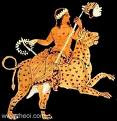Whatever made them think this was for children? With puppets or people, Petrushka is a very dark story with unrequited love, blatant sensuality and murder. Fortunately, these elements seemed to go over the heads of the many children in the audience, so overwhelming was the spectacle.
Petrushka was actually only one of the pieces performed. Petrushka being a fairly short ballet and a couple of "curtain raisers" had been added featuring Twist's famous abstract puppetry.
The main problem is that during this, we didn't know when to applaud - a problem I always have in a classical music performance. And it was impossible to break the spell that was progressively taking us over. The flower and the abstract shapes (squares and rectangles initially, yielding to semi-circles were beautiful if somewhat remote. The third piece of music - or third movement, I couldn't tell which - my ear isn't that good - the puppets became folkloric rather than abstract. Elaborate Russian towers, bouquets that grouped together and flew apart and chickens seemed to lead us into fairytale Russia. There was also a glittering silver cloth that seemed to represent the wind. The overall tone was lighthearted with a couple of hints at the conflicts in Russia - the two sets of towers confronting each other from above and below, the chickens upside down, their necks dangling on their last pass across the stage.
The initial challenge was letting go of any expectations and simply surrendering to Twist's artistry. Once I stopped thinking "OK, when do we see the puppets?" and realized they were all puppets, that it was a total experience and I was being led from the abstract to the folkloric, the enchantment of the experience took me over.
By the time the three principle puppets appear, I was totally enraptured. Twist uses a technique based on classic Japanese Bunraku puppetry. The puppeteers - in teams of three - are onstage with the actors, in black velvet. There were flashes of the puppeteers' hands or arms but honestly, we didn't care. The magic had completely taken over any technical considerations.
One surprising element was that the puppeteer character was absent - the puppeteer that first isolates Petrushka and who first brings the Ballerina into his room and then removes her. The confrontation is mostly among the puppets themselves. The puppeteer is present only as a pair of disembodied giant hands. Powerful, yet impersonal. Petrushka is thus deprived of his enemy and the confrontation is between him and the Moor, his romantic rival and the Ballerina's clear preference. Petrushka's interruption of their pas de deux leads to a chase with a fair bit of abstract filler - necessary because not only is Stravinsky a bitch to work with for a choreographer, it was necessary to show the passage of time and distance. Twist also throws in a very scary bear dancing on a big red ball at this point, very Russian, very period.
Ultimately Petrushka pays for his jealousy with his life, the Moor's scimitar in his back. Then he appears, alive again, first above the proscenium, then along the House Right seats (right where I was sitting).
It was the perfect touch of magic that Petrushka bounced back to life.

